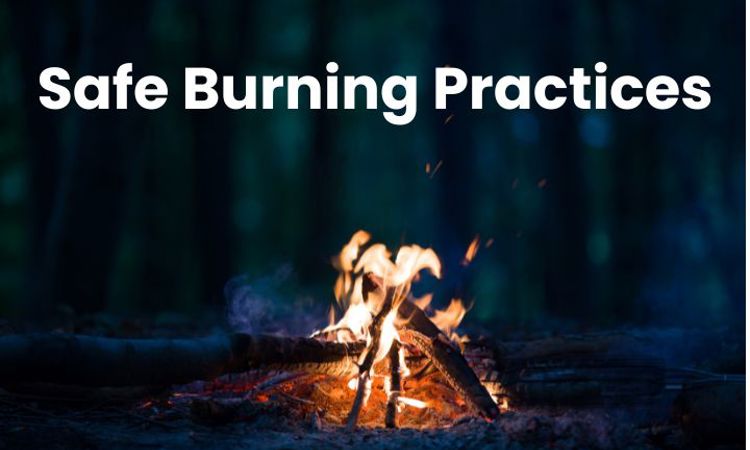Subscribe
for our newsletter to stay up to date with Elizabeth Township, ETCC Programs and Upcoming Events

TL;DR
Open burning in Elizabeth Township, Ohio, is governed by Ohio Administrative Code Chapter 3756-19, which permits only clean, dry woody materials and paper, and strictly prohibits items like food waste, dead animals, rubber, grease, asphalt, and plastics. Noncompliance can cause wildfires, toxic smoke, and legal penalties. Follow our safe burning tips, check local weather conditions, and reference related Ohio Revised Code sections to stay compliant and protect our community.
Key Takeaways
Open burning can be a convenient way to dispose of brush and yard waste. Still, in Elizabeth Township, it is subject to strict regulations aimed at protecting public health and the environment. As your local Fire Department and EMS provider, we want to ensure you understand what materials are safe to burn, the hazards of burning prohibited items, and how to comply with state law. By following these guidelines, you’ll help prevent wildfires, reduce toxic smoke, and stay on the right side of the Ohio Administrative Code.
Overview of Ohio’s Open Burning Regulations
Ohio Administrative Code (OAC) Chapter 3756-19 governs open burning throughout the state. Its primary goal is to permit only those burns that pose minimal risk, while prohibiting materials that can harm air quality, public health, or property. Key requirements include:
For full details, review the official text of OAC 3756-19.
Permitted Materials for Open Burning
Under OAC 3756-19, the only materials you may burn are clean, dry woody items and uncoated paper products. Examples include:
Tips for burning permitted materials safely:
Prohibited Materials: What Not to Burn
OAC 3756-19 explicitly forbids burning any of the following:
Burning these materials can violate OAC 3756-19, result in fines, and pose serious health hazards.
Dangers of Burning Toxic Substances
When prohibited materials burn, they generate toxic compounds that can threaten both firefighters and neighbors:
Health and environmental risks include:
Safe Burning Practices
To ensure your open burn remains safe and compliant, follow these straightforward steps:
These practices help protect property, reduce smoke hazards, and demonstrate responsible stewardship of our environment.
Relation to Other Ohio Codes
Open burning regulations in OAC 3756-19 work alongside several Ohio Revised Code (ORC) sections. For in-depth legal language, visit the links:
By understanding how these statutes interconnect, you’ll ensure full compliance with state law and avoid unintended violations.
Weather and Environmental Considerations
Even permitted burns can become dangerous under adverse weather conditions:
Before you burn, always:
These precautions not only reduce risk, they also show respect for neighbors with respiratory sensitivities.
Frequently Asked Questions (FAQ)
What is open burning under Ohio law?
Open burning is any fire where products of combustion are emitted directly into the open air without passing through a stack or chimney, per OAC 3756-19.
Do I need a permit to burn brush?
No permit is required for burning only clean woody materials, but you must comply with notification and safety requirements.
Can I burn painted or treated wood?
No, painted, stained, or treated wood releases toxic chemicals and is prohibited under OAC 3756-19.
What should I do if my burn gets out of control?
Immediately call 911, contain the perimeter if safe, and use water or a fire extinguisher until help arrives.
Are there fines for violating open burning rules?
Yes, noncompliance can result in fines, restoration costs, and potential civil liability under both OAC and ORC sections related to air pollution and fire safety.
Responsible open burning is a balance between convenience and safety. By burning only clean, dry woody materials, following safe-burn practices, and respecting local weather and neighbor notifications, you protect our community from avoidable wildfires and toxic smoke. Staying informed about OAC 3756-19 and related Ohio Revised Code sections ensures you remain compliant and contribute to a healthier environment for all.
Have more questions or need guidance on a burn project? Reach out to Elizabeth Township Fire Department and EMS: https://www.elizabethtownshipohio.com/EMS. Let’s keep Elizabeth Township safe.